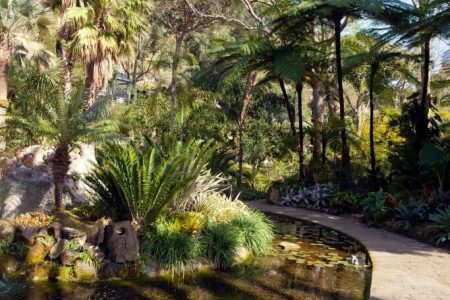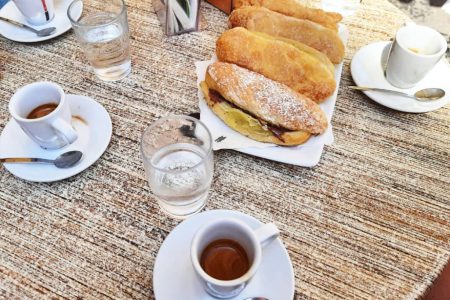Table of Contents
Are you a legend lover? Discover the fascinating island of Ischia, in the Gulf of Naples, a locality full of places to find out, animated by myths and stories that make it even more intriguing.
Typhoeus, the rebellious giant
Characterized by continuous earths movements, volcanic eruptions and inhabited by wild people, the island of Ischia in the past aroused feelings of amazement and was seen as an inhospitable place. It is said that the natural phenomena of the island are the result of the punishing action of a supernatural being, the god Zeus, toward the giant Typhon.
The giant was generated by the gods Tartarus and Gaea just to be the opponent of Zeus and claim the throne for the second lord of the world, Cronus. Zeus, furious, hurled a mountain at him and managed to defeat him, condemning him to lie under it. Thus was born the island of Ischia.
The giant did not give up and trying to get rid of the weight of the island, he turned his breath into a volcano and once in a while continues to make it tremble.
It happened Casamicciola, when Ischia really trembled
"It happened Casamicciola," in English "It happened Casamicciola" or even "I make Casamicciola happen," are expressions part of the Italian language, especially Neapolitan, for a long time. The term Casamicciola is used as a synonym for earthquake, mess, disaster, since here the disaster really happened.
The island d'Ischia is not really an island but, as the legend of the giant Tifeo says, it is the upper part of a volcano, about 900 m high from the bottom of the sea and almost 50 km wide. Consisting mainly of volcanic rocks, deposits of landslides and sedimentary rocks, it had several periods of activity with large explosive eruptions.
In the summer of 1883 a tremendous earthquake razed to the ground the small town of Casamicciola with almost all its houses and damaged those neighboring as Lacco Ameno, Forio, Barano and Serrara Fontana, causing 2313 victims, most of it in Casamicciola, including the parents of the philosopher Benedetto Croce, then seventeen years old, fortunately extracted alive. Today the seismic activity, continuously monitored, is very modest.
Nature is wonderful but can also be powerful and frightening, able, with its unstoppable strength, to take away in a moment what surrounds us.
You might be interested
Guided tour of La Mortella Gardens in Ischia
per person Book
Cab tour to Procida with island tour by sea departing from Ischia
per person Book
Tour to Procida with coffee and ox tongue tasting departing from Ischia
per person Book
The Cercopes, the monkeys of the island
Another legend tells of when the island was infested by the Cercopes. The Cercopes were wicked thieves who plundered all who landed there. The wrath of Zeus also came here and sent his sailors to liberate the island, slaughtering the Cercopes and turning them into monkeys.
Since then, all those who landed on the island heard the screams of monkeys and believing it was inhabited by Piteco, a prehistoric monkey, they called it Pithecusa.
The Magician's Cave and the mermaids
In the south-east side of the island, among the high rocky walls, we find a small cave, a precious refuge during coastal storms. Fishermen often stopped in the cave and told about the appearance of an old man with a good-natured aspect, white beard and flowing hair, sitting on the rock. They were attributed to the mysterious spirit the power to make the sea incredibly rich in fish but also to help fishermen, that's why he was called the Magician.
In the cave were also young and beautiful girls with mysterious voices that cheered the waiting of men, perhaps the mysterious mermaids.
The legend of the Church of Relief crucifix
Legend tells that a wooden sculpture, the crucifix, was found at sea by a group of sailors heading to Sardinia, stranded in Ischia by a storm. Arriving on the island, they decided to secure the crucifix in the Church of Relief, then a convent, to go back and get it when they could have left again. Curiously, the sailors were no longer able to bring the crucifix outside because every time they tried, the entrance to the convent disappeared before their eyes, so they decided to leave it in Ischia. Immediately began the practices of devotion to the crucifix "who came from the sea."
Many religious tales identify the shores, the rocks, the promontories, as meeting places between the living and the dead.
In the Island beliefs the beaches, on the night before the feast of St. John, are crossed by the janare, witches capable of ruining life with magical rites, spells and evil eye, from which you can defend yourself with handfuls of sand. It is said that a man covered up his donkey on the Maronti beach in Barano, hoping to cure him from the pains that afflicted him but when he went to free him, of the poor animal only the head remained, with a muzzle in a mocking smile. Story goes that the body was swallowed by the powerful underwater forces, the same ones that returned the Crucifix.
Sybil's Cave in Ischia
Another legend indicates the caves of Ischia as dwelling of the Sibyl, who in summer went to Ischia, attracted by the waters with wonderful properties. Persecuted by the tyrant Aristodemus, she would have taken refuge at the Castiglione, like many families who had rebelled against the master of Cuma and his barbaric methods of government. Only after his death, the Sibyl return free to her abode. Tradition tells that in the cave near Castiglione the Sibyl would have announced the coming of Christ the Redeemer.
The sacred waters of Nitrodi
It is said that the women of Ischia are beautiful but those of Barano even more and that they owe their beauty to the waters of Nitrodi. These waters originated from the punishment of a nymph, when her skin, hair and beautiful limbs were dissolved like water, the water of Nitrodi.
During the pestilence the Sibyl heard from the Oracle a prophecy, "the salvation you seek will come only from the nymph" and took advantage of it by presenting herself as the savior but only after receiving votive gifts at the altars consecrated to her. The nymph stole niter and sulfur to mix with the healthy waters to accomplish her misdeed but was discovered and lost consciousness. Her body became a stone and as punishment for the theft, it was turned into a source, since then called Nitrodi water, from the smell of the niter she had stolen.
Ischia, the Land of the Phaeacians
It is said that Ischia is just the legendary Land of Phaeacians. Ulysses, arrived here exhausted, plunged into the warm waters of Gurgitiello to recover his strength and met the beautiful Nausicaa.
The Phaeacians were a people of navigators of the Greek mythology. In the Odyssey, a famous work, Homer tells of how they welcomed Ulysses and gave him the ship with which to return to his homeland, knowing to instigate the wrath of Poseidon, the god of the sea.
The demigod that gives life to the waters of Bagnitiello
Acmeno, demigod born to the nymph Euplea, lived in human form on the island of Ischia. One day, jumping from one bank to the other of a stream fell into the middle of the waters. No one heard his cries for help, and his prayers to the gods were also in vain. Zeus, however, moved by mercy, did not abandon him and told him "you will flow with healthy waters that will relieve the diseases and joy will bring," so the limbs of the young dissolved and continued to live in the waters of the island of Ischia, in the waters of Bagnitiello.
What are you waiting for to visit the island of Ischia to relive these fascinating legends?




0 Comments